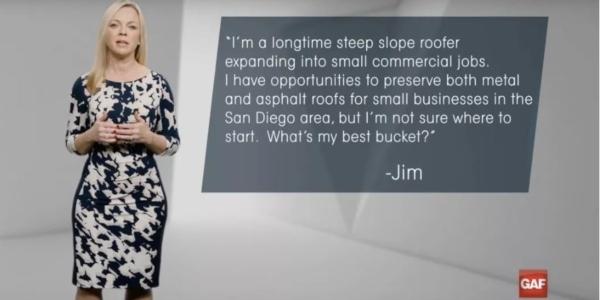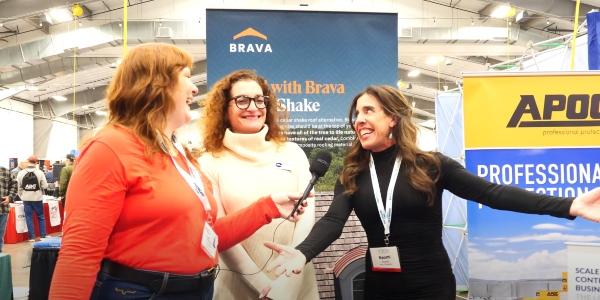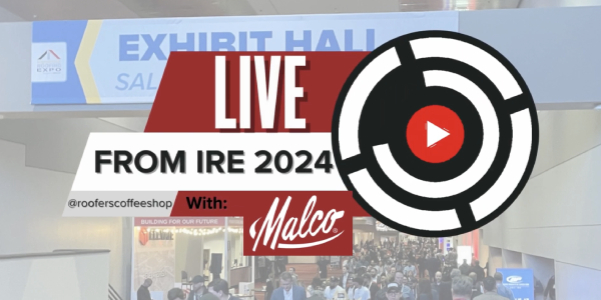Combat Unprecedented Market Swings by Diversifying Your Business

By Dale Nelson, Roof Hugger.
How retrofit and metal-over-metal roofing can help you survive sudden market changes.
Working in the construction industry has its highs and lows. Even with business booming, something like COVID-19 can come in and change the game entirely. Last year, as the result of the pandemic, we have seen construction projects slowed down, delayed and cancelled due to uncertainty and supply chain shortages. This year our business jumped dramatically because many contractors shifted to the steady and profitable metal over metal sector. Diversifying your business is crucial in dealing with unprecedented market changes. That is why you should consider adding retrofit and metal over metal to your business.
First, let’s take a quick look at the market size of existing metal roof tops and why it is worth your time to consider adding retrofits to your business. Almost 19 billion square feet of existing roofs between 20 and 50 years old make this a huge market that is continually growing each and every year. Next time you are driving around town or in an industrial area, check it out. I guarantee you can spot older metal roofs needing to be repaired or replaced.
What makes the retrofit unique?
The retrofit market is a pretty steady business. The simple truth is that no roof lasts forever, not even metal. This means when there is an economic downturn, the retrofit will still be chugging along. If you can’t build new, you will fix the roof you have.
When an old roof has reached the end of its useful life, despite the economic climate, it will be replaced. There are not a lot of contractors and installers that focus on this market. This means there is less competition on any given project. The jobs are frequently negotiated, with owners getting pricing from three or fewer contractors, making your success rate much higher than it might be for new construction. Since the buildings are existing, the permitting process is much simpler. In Florida, there are also several Florida Product Approved assemblies, further speeding up the permit process. Four facts to keep in mind:
1 - The projects are shorter in duration which translates to good cash flow, getting your money more quickly than you would in new construction and typically with no long-term retainage.
2 - Installation is much faster and easier than new construction. Your installers are not working over open framing which requires more equipment while exposing them to increased fall hazard, they are working on top of the existing roof. This makes stacking of material, equipment, tools, etc. much faster and easier.
3 - The framing to support the new roof is installed on top of the old roof, making it unnecessary to add structure from underneath. The framing systems can be designed to meet current codes and fit most existing roof panels.
4- Design and engineering can be provided by the retrofit framing system supplier.
What makes retrofit appealing to the building owner?
The single most important benefit to the owner is that the retrofitting of an existing metal roof does not disrupt building operations. They can continue to conduct business normally, typically with little or no interruption to operations.
Cost is always a consideration and metal over metal retrofit is very cost efficient compared to other competing products. One of the major reasons is the exceptionally long life of metal roofs. The expected service life of a new 55 percent-aluminum-zinc alloy-coated (Galvalume or equivalent) Standing Seam roof is demonstrated to be over 60 years. Non-metal roof systems from coating systems to single-ply products, typically have a service life from 5 to 24 years.
Many older roofs are the screwdown type metal roofs that were installed long before standing seam was readily available. The good news is these older screw-down roofs are easily upgraded to standing seam, eliminating most, if not all of the exposed fasteners and many of the problems that were associated with the older roof. Additional insulation is easily added to add energy efficiency to the old building.
New standing seam roofing is the single best platform for photovoltaic (PV) panels for two reasons. First, it is the only roof system that has a service life beyond that of the PV panels. Second, the PV panels can be installed without penetrating the new roof.
Today’s metal over metal systems can easily meet the new International (IBC) and Florida Building Codes (FBC) requirements. As we know all too well, windspeed design pressures in Florida have jumped dramatically over the past 15 years. They have moved from 100 mph to 130 mph and 120 mph to 174 mph in some areas. These are huge jumps in design pressures on buildings that were not originally designed for them. Modern retrofit metal framing systems and panels can meet required load demands and do so on top of the existing roof, eliminating the need to get inside the building to try to weave new structural components into the existing purlin and frame system.
What are the competing products?
Within the retrofit market there are, like all businesses, competing products. The most common competitors to metal over metal include: roof coatings. There are two basic types of roof coatings. The first and most commonly used is the simple “surface coating” designed to “protect and extend the life of the existing roof.” These materials are commonly spray applied acrylic formulations, applied 15-30 mils in thickness. These products are not intended to be used as a water barrier but rather as a protective coat to extend the life of the underlying material and to be UV reflective. They are installed on all types of roofing: shingles, tile, EPDM, TPO and metal.
The key to their successful usage is achieving even coverage and good adhesion. However, getting proper coverage and adhesion on a metal roof is extremely difficult. Blisters, pinholes, fish eyes, craters and other imperfections are common. The result is an investment by the client of something that does nothing for leak issues, has a very short life requiring annual or bi-annual maintenance, and when an imperfection occurs and traps moisture between the metal roof and the coating, corrosion of the metal panel will occur very quickly, actually reducing its remaining life. Coatings are normally considered short term solutions having a three-to-five-year life.
They have some appeal because they are at the low end of the cost spectrum. They are often inaccurately sold as a waterproofing solution, they are not. I believe they represent a poor investment for the typical metal roof client’s money.
The second coating product is “liquid applied roofing.” These materials are commonly poured and spread onto the existing roof and applied from 45-60 mils in thickness. Many have an additional reinforcement fabric pressed into the liquid as it is being installed. Like coatings, they are applied over any number of existing roofing materials. Surface prep and adhesion are still the key to a successful application.
Once again, metal is a difficult surface to properly prepare for full adhesion. There are panel end-laps, side laps, end dams, closures, roof curbs, roof penetrations and many other details to waterproof, keeping in mind that metal roofing is constantly expanding and contracting, pushing, pulling and stretching this material. The cost of this system is significantly more than a simple coating and when completed, a newly liquid applied roof still will not meet today’s building code.
No coating improves the capacity of the existing roof and they may actually hide some serious structural shortcomings. Failed roof fasteners in older metal roofs are common and it is the roof fasteners that transfer the uplift strength and the diaphragm strength from the roof panels to the building structure. Small fabric caps are frequently placed over failed fasteners and the coating material is then applied, hiding these serious structural issues without repairing them, inviting a total roof failure.
Once again, for the client, the cost is significant yet the gain is questionable. The quoted material life ranges from 10-to-18 years with proper maintenance but, like regular coatings, if water becomes trapped between the coating and panel, the panels will corrode quickly and may become unrepairable.
TPO over metal
The final and most significant competition to a metal over metal retrofit is “TPO over metal.” This system places a flute filler of rigid insulation between the major ribs of the existing panels and then an additional layer of rigid insulation over the filler pieces (or a recovery board) and finally installs a 45-60 mil TPO layer over the top of this upper insulation layer.
The TPO material must be attached to all the existing purlins in a very specific pattern. These systems can be demonstrated to meet the new wind load requirements but never the new snow load requirements because they rely on the existing panels. Careful consideration by the owner or competitor is needed. There are over 50 different TPO assemblies and choosing the correct code compliant one for metal is a challenge.
Metal roofs panels are not the same as structural metal decking. Roofs that have facades or parapets need to be particularly handled with caution, since contractors frequently fill existing valley gutters and cut scuppers into the facade or parapet, allowing water to stack on the roof and risking a structural overload and failure. TPO over metal systems cost from 80-110 percent of a metal over metal system and provides less than half the life of the metal-over-metal system.
Conclusion
The metal-over-metal retrofit business can add a steady volume of sales to your company and is not as susceptible to the cycles of new construction activity. It is a great value for your client, providing them a long term, strong and code-compliant roofing solution. It will allow for the installation of more insulation and will be ready for a photovoltaic upgrade when your clients are. Also, it will not interrupt their ongoing business operations. Metal roofing is the best performing roofing material in the market with the lowest lifecycle cost. Use these strengths to support your clients and your business: everybody wins.
Learn more about Roof Hugger in their RoofersCoffeeShop® Directory or visit www.roofhugger.com.
Original article source: Roof Hugger























Comments
Leave a Reply
Have an account? Login to leave a comment!
Sign In